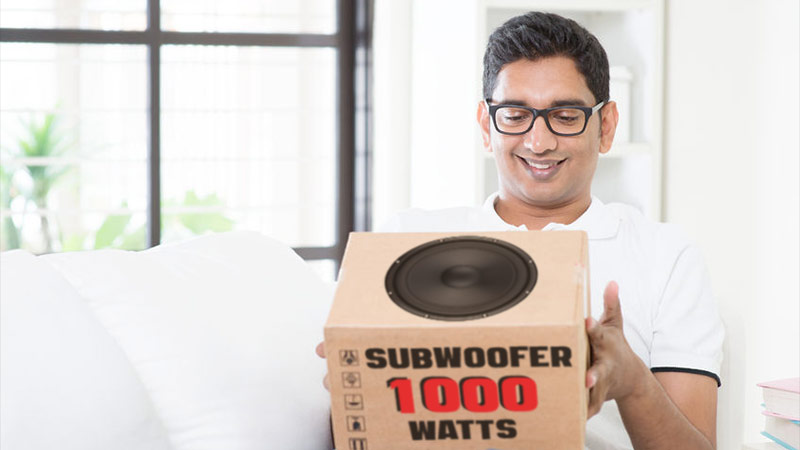 There is no car audio topic more confusing and inconsistent than speaker power ratings. The fact is, the methods developed to test speakers are quite simple and reliable. If the speaker passes the test, print the number.
There is no car audio topic more confusing and inconsistent than speaker power ratings. The fact is, the methods developed to test speakers are quite simple and reliable. If the speaker passes the test, print the number.
A long time ago, some unknown manufacturer felt it was important to tell consumers that their speaker would handle more power than a competitor’s product. We are talking about the Lear Jet, Jensen and Muntz days, not five or 10 years ago. Whoever that company was, printed a bigger number on their packaging and told their customers that their speaker was better because of it. Of course, competitors followed suit and countered this slightly bogus claim with an even more ridiculous rating. On and on this goes. We currently have 6×9 speakers that claim to handle 600 watts but have a tiny little 1-inch voice coil. The math simply doesn’t add up.
In this article, we are going to talk about speaker power ratings. We’ll explain what the ratings mean and how they are tested. When you are done reading this article, you’ll never look at a bogus MAXIMUM POWER specification the same way.
What is Power?
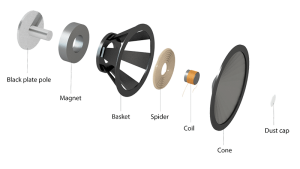 Power is a unit of energy that describes how much work is done over a specific period. We car guys know about horsepower and torque, and since you are reading this, you clearly have an interest in audio systems and have heard of the electrical unit of power known as the watt. By definition, 1 watt of power is equivalent to 1 joule of energy delivered over a period of one second. In terms you may be more familiar with, that’s equivalent to the work done in a circuit powered by 1 volt where 1 amp of current is flowing through the load. Exciting, isn’t it?
Power is a unit of energy that describes how much work is done over a specific period. We car guys know about horsepower and torque, and since you are reading this, you clearly have an interest in audio systems and have heard of the electrical unit of power known as the watt. By definition, 1 watt of power is equivalent to 1 joule of energy delivered over a period of one second. In terms you may be more familiar with, that’s equivalent to the work done in a circuit powered by 1 volt where 1 amp of current is flowing through the load. Exciting, isn’t it?
In our speakers, the power from our amplifier flows through the voice coil. The flow of electrons through the coil creates a magnetic field around the coil. Depending on the polarity (direction) of the current flow, the magnetic field may cause the coil and the attached cone to move forward or backward in the basket. As the signal coming out of our amplifier is alternating current, the speaker responds by moving back and forth with the changes in polarity.
What Happens When We Have Too Much Power?
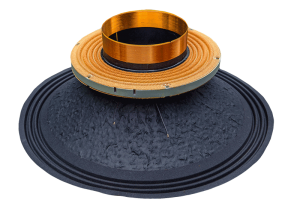 The electrical power from our amplifier is no different from the electricity that flows through an electric heating element on a stovetop. The heating element has a resistance, usually between 27 and 40 ohms. As we apply the 120v electrical signal from the wall to this coil of wire, work is done. For a 27 ohm coil, fed with 120 volts of electricity, 533 watts of work is produced. This “work” is the generation of heat.
The electrical power from our amplifier is no different from the electricity that flows through an electric heating element on a stovetop. The heating element has a resistance, usually between 27 and 40 ohms. As we apply the 120v electrical signal from the wall to this coil of wire, work is done. For a 27 ohm coil, fed with 120 volts of electricity, 533 watts of work is produced. This “work” is the generation of heat.
When we send 100 watts of power to a speaker, almost all of that energy is converted to heat. Maybe 2 or 3 percent of that energy from the amp is converted to sound energy. Hopefully, you can see where this is going. When current flows through the voice coil, it gets hot. More current produces more heat. Eventually, the glue that holds the voice coil winding to the former starts to overheat and fail. At this point, the voice coil winding will likely unravel and usually gets jammed in the magnet gap, causing the speaker to stop playing.
As an aside, we could get into an entire discussion about power handling problems caused by excessive cone travel. For the purposes of this article, let’s assume we are operating the speaker within a frequency range where cone excursion is not an issue. We’ll talk about speaker excursion another time.
The Reference for Power Ratings
The current reference for testing automotive loudspeakers is the CEA-2031 standard. This set of test criteria include how and where the speaker under test is mounted and the content of the signal used to test the speaker. It is this audio signal, and how it is used, that is of interest to this article.
The power handling test track is a modified pink noise signal that is bandwidth limited between 40Hz and 10 kHz. The high-frequency content of the signal simulates the spectral content of a distorted bass or midrange signal. That’s right: If you distort a low-frequency signal, it creates harmonics. As such, you will send lots of extra midrange and high-frequency information to your speaker if the amp is clipping.
The CEA-2031 signal is recorded with very specific amplitude specifications. The test track is prefaced by a reference-level sound recording. In order to quantify the power level of the test, the reference signal is played and the amplitude is measured. On the engineering side, power tests are taken at RMS voltage levels. That voltage is converted to watts, based on the minimum impedance of the driver under test. For example, efficiency measurements are taken using voltages of 2 or 2.83 volts, which translate to 1 or 2 watts respectively on a 4-ohm speaker.
How They Test Power Handling
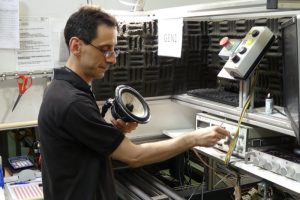 Once the reference level is set, the test tone is played without making adjustments to the playback amplitude. The test track is designed to provide two simultaneous tests. The RMS voltage level of the track tests the speaker’s continuous power handling capabilities. The peak amplitude of the signal simultaneously tests the peak power handling of the speaker with an additional 3dB of input power.
Once the reference level is set, the test tone is played without making adjustments to the playback amplitude. The test track is designed to provide two simultaneous tests. The RMS voltage level of the track tests the speaker’s continuous power handling capabilities. The peak amplitude of the signal simultaneously tests the peak power handling of the speaker with an additional 3dB of input power.
The device under test (speaker) is placed in a jig in a room with controlled environmental conditions. “The loudspeaker is rated for the power that it can withstand for 2 hours without a permanent change in acoustical, mechanical or electrical characteristics greater than 10%,” according to the specification. To achieve a higher rating, the test is to be repeated at a higher power level for the same time after a two-hour cool-down period.
Many companies test their products for longer. A lot of Japanese companies test their speakers for eight to 10 hours. Some premium speaker companies test their speakers for an awe-inspiring 100 hours. That’s right – more than four days playing this modified pink noise track.
There are variations of this test. For subwoofers, mounting the drivers in a sealed enclosure will increase the difficulty of the test dramatically. The air inside the enclosure will get hot and reduce the ability for the subwoofer to cool itself.
Where Do the Big Numbers Come From?
So, how can the marketing guys sleep at night with their insane power rating claims? We mentioned that physical power handling could be a concern. Of course, playing bass into a tweeter is going to result in disaster, quickly. Would playing a single tone for a period of time determine a power handling rating? What if a speaker can handle a 500 Hz tone for a few hours? Is that a power rating? Most certainly. Does it accurately describe the capabilities of the speaker? Not really.
Choosing Speakers for Your Vehicle
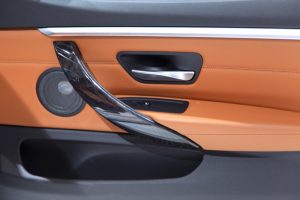 So, now that you know how speaker power ratings are created, you can basically ignore them. The process of choosing a speaker should be based on performance, not specifications. Frequency response, efficiency and distortion performance separate good from run-of-the-mill. A speaker rated for 150 watts is not necessarily better than a speaker rated at 125 watts.
So, now that you know how speaker power ratings are created, you can basically ignore them. The process of choosing a speaker should be based on performance, not specifications. Frequency response, efficiency and distortion performance separate good from run-of-the-mill. A speaker rated for 150 watts is not necessarily better than a speaker rated at 125 watts.
If you are buying subwoofers, power handling specs become a little more important. You won’t want to pair up a subwoofer rated for 200 watts to a 1,000-watt amplifier. If you want to keep things safe, match the subwoofer power rating to the amp rating. If you want to guarantee you’ll never blow the sub, buy a speaker that is rated for twice as much power as your amp.
Your local mobile enhancement retailer can help you design an audio system upgrade that sounds amazing, will play at the volumes you want and will last for years.
This article is written and produced by the team at www.BestCarAudio.com. Reproduction or use of any kind is prohibited without the express written permission of 1sixty8 media.